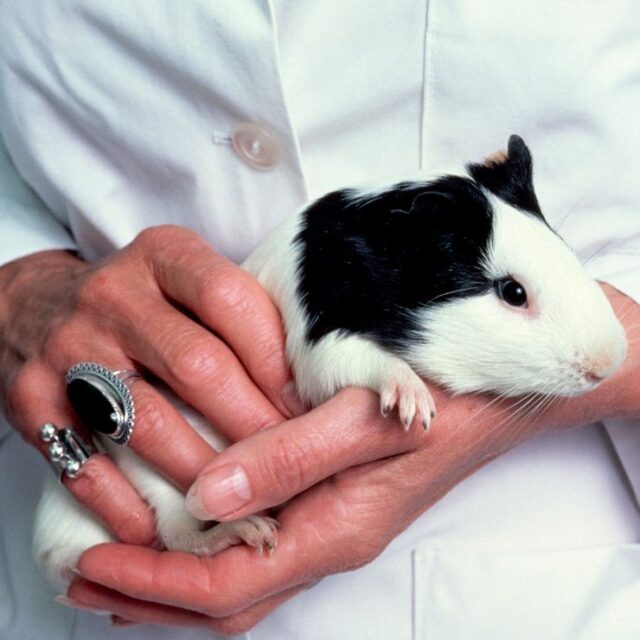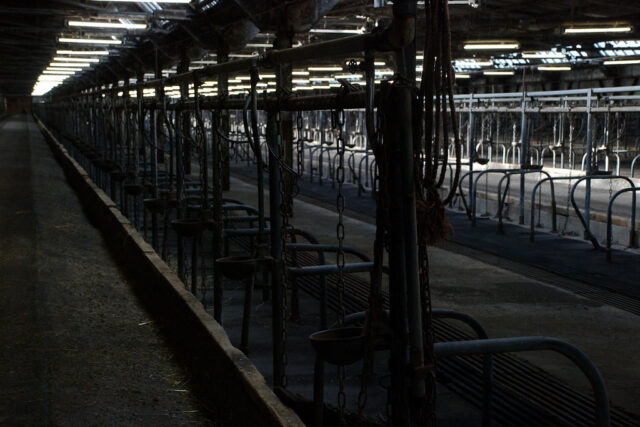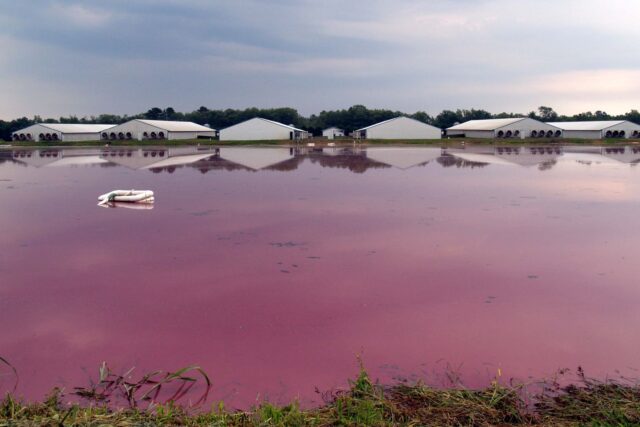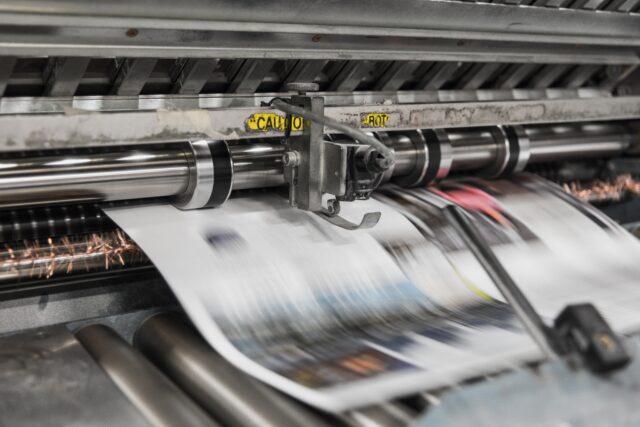Animal or Industry Welfare?
How a secret USDA policy keeps animals in research hidden
Magdalene Beck
April 1, 2025
* The author of this piece was involved with litigation in Rise for Animals v. Vilsack in the course of her work with the Harvard Animal Law & Policy Clinic. *
Rebecca Garverman could hardly believe what she’d found. Then a student clinician at the Harvard Animal Law & Policy Clinic, she and her clinical classmate had been poring over the hundreds of documents they’d received from the USDA in response to their Freedom of Information Act (FOIA) request. Suddenly, there it was: proof confirming what the Clinic “had heard through the grapevine.” The USDA’s Animal and Plant Health Inspection Service division (USDA-APHIS) secretly had imposed a new inspection policy for animal research facilities covered by the Animal Welfare Act (AWA).
“The agency that’s charged with ensuring really minimal standards are met was not even doing a full inspection to ensure those minimal standards were met.”
This law sets minimum standards of care for cats, dogs, hamsters, rabbits, nonhuman primates, guinea pigs, and other warm-blooded animals (besides rats, mice, horses for research, and farm animals) used for exhibitions, research, or companionship. It requires APHIS inspectors to inspect AWA-covered research facilities every year. However, to the Clinic’s surprise, the USDA had ordered its investigators to conduct only partial inspections of research facilities accredited by the private trade association, Association for Assessment and Accreditation of Laboratory Animal Care International (AAALAC). And the USDA had buried this policy in unpublished internal guidance—out of the American public’s sight and mind.
The USDA’s inspection policy is just one of the many secrets in this story. This story is also about an open secret: the regulatory capture of the USDA by the entities it regulates. And it’s about a truth that the biomedical research industry likely wishes were kept secret. An estimated 50 million animals, including dogs, cats, nonhuman primates, rats, and mice, are currently confined in research facilities across the United States. This research, which can have little value for predicting drug toxicity in humans and can be immensely cruel, is not regulated to the extent these animals were promised by the law.
Uncovering A Hidden Policy
Garverman made this discovery during research for New England Anti-Vivisection Society et al. v. Elizabeth Goldentyer. The Clinic represented animal advocacy groups challenging the USDA’s denial of their petition to improve the psychological well-being standards for nonhuman primates used in research. According to Kathy Meyer, the Clinic’s inaugural director and lead counsel in that suit, “one of the main reasons” the USDA gave for its denial was that such standards were unnecessary under the agency’s allegedly current annual inspection policy.
Under that policy, the USDA interpreted the AWA to require full inspections of every regulated research facility at least once per year. The relevant AWA language states that the USDA “shall inspect each research facility at least once each year and, in the case of deficiencies or deviations from the standards promulgated under this chapter, shall conduct such follow-up inspections as may be necessary until all deficiencies or deviations from such standards are corrected” (emphasis added). AWA violations include poor veterinary care, unsanitary enclosures, inadequate safety measures, and insufficient food or water.
In its petition denial, the USDA had explained that “APHIS inspectors evaluate a facilities’ [sic] compliance with the regulation during the inspection. They examine and document all areas of care and treatment that are covered under the AWA, including the [regulated facility’s enrichment] plan. The inspector also observes the regulated animals; inspects the facilities, including enclosure or housing materials space, and records.”
The USDA had buried this policy in unpublished internal guidance—out of the American public’s sight and mind.
However, swirling rumors that the USDA had stopped conducting full inspections of all facilities led the clinic to make a FOIA request. The FOIA results revealed that these rumors were true. The USDA had stopped requiring APHIS inspectors to inspect all aspects of every research facility every year to determine AWA compliance in February 2019. Then, it clandestinely had implemented a new policy requiring its inspectors to perform only “focused inspections” at AAALAC-accredited facilities. The Clinic decided to represent Rise for Animals and the Animal Legal Defense Fund in a suit challenging this policy: Rise for Animals v. Vilsack.
Through these focused inspections, APHIS inspectors are only allowed to inspect one of three aspects of an AAALAC-accredited facility at each annual inspection: the animals, the “facilities,” or the facility’s paperwork. As a fourth area of focus, an inspector may inspect a “sampling” of some or all of those three areas during an annual inspection. Inspectors conducting these focused inspections are “prohibited from conducting full inspections of each such facility, unless specifically requested to do so by the facility itself,” the Clinic’s complaint noted in Rise for Animals.
Furthermore, inspectors must rotate the focus of their inspection during each annual visit. Hypothetically, therefore, an inspector could inspect only the animals one year, only the paperwork the next year, only the facilities the next year, and a sampling of the paperwork and/or facilities the next year before again inspecting the animals the next year. As Garverman put it, “There could be two, three, four years that go by before [an APHIS inspector] even look[s] at the actual animals that are undergoing these procedures, that are suffering … How can [inspectors] know if these animals are being taken care of properly and being held to the standards that are in the law if they’re not even looking at them?”
Therefore, what the USDA had described as its “current” inspection policy in October 2019 was in fact a defunct policy. Its new, secret policy already had been in place for eight months—meaning its inspectors had not been “observing the regulated animals” every year, at least in AAALAC-accredited facilities. Worse still, as described below, the USDA had implemented this policy behind closed doors and in unpublished, internal guidance documents that specifically instructed inspectors to hide the truth.
For both Meyer and Garverman, Rise for Animals offered an opportunity to hold the USDA accountable, both for hiding its secret inspection policy and for shirking its legal duty to inspect animals at research facilities every year. As Meyer put it, it was “important to hold the USDA to its job, which is to make sure these animals are being treated humanely … We really do want to improve the lives of these animals.” For Garverman, challenging the secret policy was “a bit of a no-brainer,” especially given the “glaring … sneaky” way that the USDA had implemented it.
“Until we have viable alternatives” to animal testing, Garverman said, “it’s really important that we hold laboratories to the highest possible standards when they are engaging in animal testing … [H]ere [was] an example of the very opposite of that … The agency that’s charged with ensuring really minimal standards are met [was] not even doing a full inspection to ensure those [minimal] standards [were] met.”

Image by Linda Bartlett and released by the National Cancer Institute in the public domain.
Nowhere to be Found
The USDA had been considering an inspection policy involving AAALAC accreditation long before it clandestinely implemented the new policy. In January 2018, it invited public comment on a proposed new policy that would “recogniz[e] the use of qualified, third-party programs when determining APHIS inspection frequencies at regulated facilities” licensed or registered under the AWA.
As the USDA later recognized, the “vast majority” of responsive stakeholder and public comments strongly condemned the proposed deference to AAALAC accreditation as a basis for reducing inspection frequency. Such comments cited the association’s lack of impartiality and the blatant AWA violations at AAALAC-accredited facilities. This high rate of violations may be due, in part, to the fact that AAALAC’s standards for accreditation are based not on the USDA’s standards for AWA compliance, but rather on the 2011 edition of The Guide for the Care and Use of Laboratory Animals. This guide, the Clinic’s complaint explained, “employs a flexible performance and practice standard for assessing program outcomes, such as adequate sanitation, appropriate housing, or environmental enrichment.”
In light of these stakeholder concerns, the USDA publicly announced in May 2018 that it would not consider third-party inspections or certifications when establishing AWA inspection frequency. Nevertheless, it rolled out its AAALAC inspection policy in February 2019. Secretly.
“The whole reason that Congress passed the Animal Welfare Act in the beginning was to get at the problem with industry self-policing … Congress made it very clear that it rejected this whole notion of having this industry-dominated trade association be responsible for, in any way, enforcing the Animal Welfare Act.”
As revealed in the FOIA documents that the Clinic received, the USDA “instructed its inspectors not to disclose the existence or the contours of the … [p]olicy outside of the agency” and “to convey the … [p]olicy only to the specific facilities that they inspect.” The agency also informed its inspectors that “there would ‘be no stakeholder announcement’ of the new [p]olicy.”
Plus, the secret policy “and the way in which it is implemented would not be included in the agency’s publicly available Inspection Guide.” Accordingly, in an inspection guide that is otherwise “pretty robust” per Garverman (see the most recent version here), “this very important [new policy] that says [USDA inspectors are] actually not doing what’s in the manual is nowhere to be found.”
A Fox Watching the Chicken Coop
This secret inspection policy contradicts not only the AWA’s language but also its purpose, as revealed through its legislative history. Passed in 1966, one year after AAALAC was founded, the AWA was intended to check AAALAC accreditation. Indeed, during the AWA’s drafting, Senator Clark described AAALAC-accreditation as “setting a fox to watch the chicken coop.”
As Meyer explained, “The whole reason that [Congress] passed the Animal Welfare Act in the beginning was to get at the problem with [industry] self-policing … Congress made it very clear that [it] rejected this whole notion of having this industry-dominated trade association be responsible for, in any way, enforcing the Animal Welfare Act.”
Two decades later, in 1985, when Congress amended the AWA to require annual inspections of all regulated facilities, the USDA once again lobbied for AAALAC deference, and Congress once again rejected this proposal. As Meyer shared, “[T]his isn’t just a bunch of activists saying that this is an industry-dominated … group and there’s a huge conflict of interest … when the USDA relies on AAALAC to do its job … Congress said it over and over again.”
Congress’s concerns about AAALAC accreditation were, and remain, founded. As a private organization that derives its funding from accreditation application and annual renewal fees, AAALAC has few incentives to deny accreditation to animal research facilities that pay for the privilege. As Larry Carbone, a veterinarian who served as the Director of the Institutional Animal Care and Use Program at the University of California San Francisco, put it: “AAALAC wants everybody to stay accredited.”
Especially major research entities. According to Carbone, “12 years ago, I think [a lab at] Harvard had kind of a bad site visit … AAALAC doesn’t want to lose Harvard, as they want to be able to say all the big places are … AAALAC-accredited. So they work a lot with an institution to bring them up to standards.”
Indeed, under AAALAC’s tiered accreditation system, research facilities in violation of its standards still maintain their accreditation. Specifically, facilities with “conditional,” “deferred,” or “probationary” accreditation, all of which require the correction of “deficiencies” within certain time frames, can continue to operate for up to two years without full accreditation.
For example, an August 2021 letter from People for the Ethical Treatment of Animals (PETA) revealed that, between November 2017 and April 2021, 400 animals had died at the AAALAC-accredited CDC’s facilities in Georgia and Colorado due to noncompliance with minimal animal welfare procedures. These facilities maintained their AAALAC accreditation while, a Forbes article revealed, research “animals [were] dying from a lack of food, water or air … anesthetic overdoses, improperly conducted euthanasia, and [in one rabbit’s case]… being infested with too many bags of ticks.”










